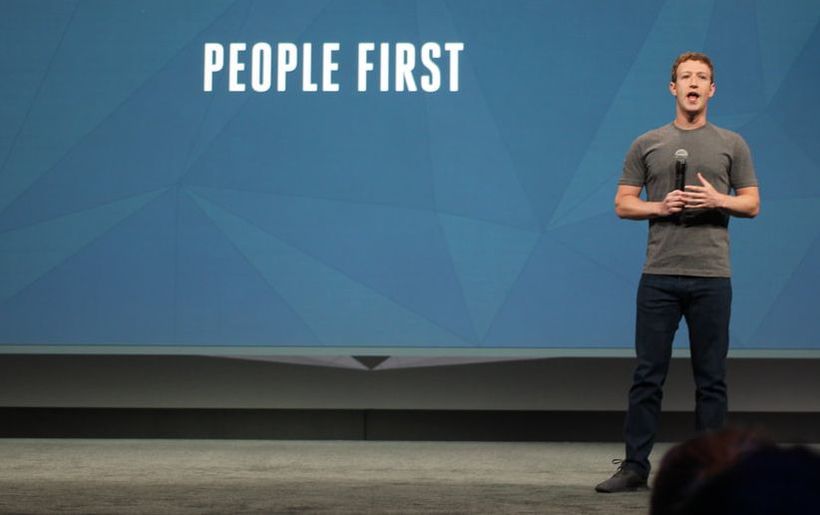|
When someone signs up to your email newsletter regard it as one of the biggest compliments you will receive in business. But watch out, winning people’s trust and business via email is getting harder. Greater regulation, concerns about privacy and our frenetic Attention Economy means you will need to deploy all your communications nous to cut through the media noise.
1 Comment
Authentic communication is a noble and righteous endeavour. But being authentic has to be more than a company catch phrase. There needs to be a real connection between how an organisation speaks about its endeavours and what it does in practice. How do you feel, for instance, when you see a stunningly shot commercial with a moving story, only to find the ad is flogging insurance? It jars. Be it corporate social responsibility or social purpose, connecting brands with deeper meaning has become a busy marketplace. As such, there is a widening gulf between those companies that are making a heartfelt connection with audiences and those that are essentially engaged in a cynical marketing exercise. Have you noticed the world spinning a tad slower since the Facebook algorithm changes? My feed has more personally relevant posts now and less noise from those outside my inner circle. That was the intention when Facebook CEO Mark Zuckerberg announced that users’ posts and engagement would gain greater prominence at the expense of “public posts from businesses, brands and media”. Facebook wants to favour content that prompts conversation and users’ active participation rather than stuff that just gets liked for the heck of it, including previously popular video. Sounds like less cats and more discussion touchpoints. Already, time on Facebook has dropped marginally - and Zuck seems fine about that. At times, my news feed resembled more an eclectic mish-mash of news and product information than a space for personal interactions with buddies. But these changes have challenged the approach of many content marketers who had crafted strategies for clients around social media, especially Facebook, as well as media players who embraced distributing news via the platform. To be fair, though, users will be asked to indicate media they trust, which may improve the ranking of those outlets. If you are in media and feeling light-headed, take a deep breath - you have been working in the most disrupted of industries. You deserve a beer or something harder. Now sit down. Because I have encouraging news for you - as well as same trends to consider from my recent sabbatical in New York. What you do not want to hear is that the pace of change will continue as it has been. It won’t. It will multiply - that’s according to everyone at the forefront of change. The good news for media is that clear paths have emerged. The fog of uncertainty has lifted around paywalls, on how best to fund journalism and on where Facebook and Google fit into the media equation - well, sort of. Media folk also have a lot to thank Donald J Trump for - because he has re-stoked the fires of quality journalism. In short, for the first time in years, the media has reason to feel optimistic. I spent two weeks in New York visiting established and new media players, as well as attending the International News Media Association (INMA) world congress. During an INMA-run study tour I visited iconic media, including The New York Times (NYT), Dow Jones, Bloomberg and Google. I visited start-ups Playbuzz and established digital companies such as Chartbeat and Nativo. Some of the deepest insights came from talking with media executives. I spent time with delegates from the US, Germany, China, India, Latin America, South Africa, Finland, Norway, Sweden. Gee, even Australians and Kiwis. What were the themes? I shared a bunch in a blog aimed at communications teams and those wanting to craft their own DIY Newsroom™. Here I zone on what is of relevance to the news industry and those keen for solutions. So let’s roll. 9 essentials from Media Central, New York City, for communication teams to knock it out of the park1/6/2017 The stodgy stuff of reinventing business models and how best to use data is consuming the world’s top media executives in 2017. The new shiny toys of immersive reality and 360-video are receiving plenty of attention and funding, but for the most part big media is focused on getting its house in order. That is about returning to purpose and applying a traditional sales funnel approach to convert window shoppers into fully-fledged subscribers and then maximising revenue per user. Joining the dots between data and customer conversion is critical. Funnels? Data? Boring, huh? But for media today these are the smarts, along with amazing tech, helping companies emerge from a fog of uncertainty. I got up close and personal with the latest global thinking by spending two weeks in New York, the self-appointed epicentre of media today. I took a study tour of iconic media organisations, including The New York Times, Wall Street Journal, Bloomberg and Google, along with lesser-known but impactful start-ups PlayBuzz, Navito and Lotame. The tour was a prelude to the International News Media Association world congress held at the New York Times Centre, attended by media executives from 40 countries, and book-ended by a workshop that built a playbook for print. The message from New York: start spreading the news, media is fighting back. And I will address that in more detail in another blog. For those of us in the business of communications, I identified nine themes to absorb and which will help you better understand the landscape as is stands. *** I have an amazing doctor. He is terrific at his job, knows my history, communicates simply and, to top it off, is a good bloke. Most important is I have confidence in the way he practises medicine. Which is kind of what you want when it comes to your health. Everything else runs second. Similarly, when feeling the pulse of your business you want a no-nonsense, fact-based method that gives you an honest appraisal. Nothing beats a clinical, intricate look-see. After decades of overseeing newsrooms and seeking to optimise their performance, I have found there are about 20 essential aspects for any health check of your communications to prove meaningful. The object is to forensically understand your current state, from which you can then review and step-out a you-beaut communications/content strategy. The declining fortunes of local media represents an unprecedented opportunity for local governments to step into the breach, set up a DIY Newsroom approach and go direct to residents with their message. Today I learned of another “restructure” at one of Australia’s largest media chains, which is code for more staff redundancies and the lay-off of more journalists. This spells another grim chapter for an already distressed traditional media. In the regions, newspapers have greatly reduced the number of editorial staff, their circulation has plummeted and that has meant they have had to try to do more with less. The regional TV landscape is not pretty either. When I was editor of a large regional daily newspaper several years ago, I had a staff of 80 full-time editorial employees. Today, there are less than 30 editorial staff. Council insiders tell me that shrinking local media is making it harder for council messages to be heard. Or, is it actually councils’ best-ever opportunity to engage with residents and ratepayers in new and profound ways by setting up a true DIY Newsroom? That is right: if they were SMART, councils would see themselves as the primary destination and distributor of compelling, useful and relevant content for their local government constituents. Any business serious about showing its best face to the world in 2017 needs to develop a monthly content calendar - one that converts to results. As creator of the DIY Newsroom approach to content, my mission is to empower businesses to do it themselves. Indeed, if you are a medium-sized or larger business, or any business with communication nous and resource, you should be controlling your own message rather than leaving it to external agencies. Get it right and you could zoom through cyberspace from zero to hero. But let us be clear. Crystal. As the ultimate reference guide, the content calendar will make or break your level of reach and engagement with your target markets. The content calendar requires considerable thought and should be utterly aligned to your business objectives. Content should embody who you are and what you stand for. It needs to be compelling, relevant and hit the target. Critically, get the outline of a distributed content strategy right - and then start scheduling and sharing. Yes, those likes, followers and connections beckon. Yes, you want to use that new fandangled tool to automate the delivery of your enriching blogs, inspirational quotes and insightful posts. But stop. Pause and think about whether you have factored in these five essential steps that will underpin the success of your distributed content. |
AuthorStuart Howie is a Canberra-based media and communications strategist. He has worked with private and public organisations in Australia and New Zealand, helping them to discover, shape and tell their stories. He is the author of The DIY Newsroom, which won the social media/technology category at the Australian Business Book Awards. Categories
All
|










